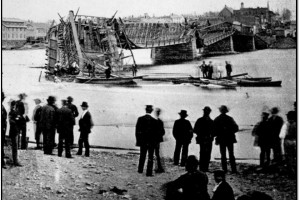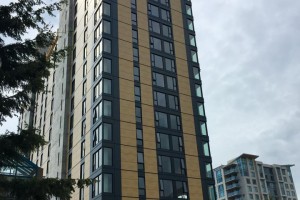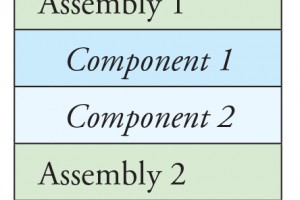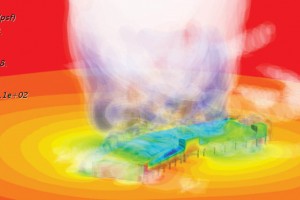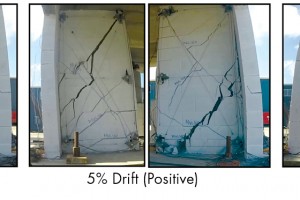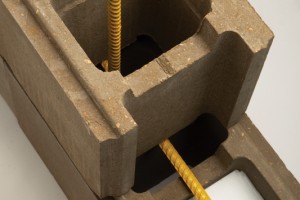Dixon is located about 97 miles west of Chicago on the southwesterly flowing Rock River, a tributary of the Mississippi. A wooden bridge crossed the river at Dixon for years but was frequently washed out in floods. In 1868, it was decided that an iron toll bridge was required, and the Mayor solicited bids. Several committees of the City Council visited bridges and bridge works in Chicago, Detroit, Cleveland, and elsewhere. A total of 11 bridge companies submitted proposals for 45 different bridge styles and lengths from wood to iron. …
Review Category : Articles
It has been my personal observation, albeit in a limited geographical area, that some people are clearly not understanding the COVID-19 public health messages inundating all of us. Either that or the messages are just too opaque or generalized (one might say dumbed down) as to leave many people bewildered and confused and trying their best, but not understanding why. …
How Tall Mass Timber Touches the Sky and Matches the Fire Performance of Traditional Non-Combustible Construction Types
With the adoption of the 2021 International Building Code (IBC), municipalities across the United States will have the ability to build wood buildings taller than ever before. With three new types of construction, Type IV-A, IV-B, and IV-C, mass timber buildings will allow design professionals to erect wood buildings up to 18 stories in height. Figure 1 represents the maximum permitted number of stories under the Type IV-A code change. While these structures are constructed from wood, they are not conventional light-frame construction, and the structural behavior and fire resistance of mass timber structures are not comparable to light-frame construction. …
One of the last people I thought I would ever get professional advice from is Tom Hanks. Then it happened. It was during my daily lunchtime indulgence of surfing YouTube for a good comedy or anything unrelated to structural engineering. I stumbled upon a video of Tom Hanks’ acceptance speech for the Golden Globe Cecil B. DeMille Award, which is for outstanding contributions to the world of entertainment. …
What is the future of masonry? Innovation in masonry is critical to meet the growing challenges facing our world. These advancements will create new markets, foster economic growth, and create new green technology. Over the next decade, masonry will evolve into several exciting new hybrid technologies and become a critical part of additive manufacturing. Traditional masonry will be expanded into new design and assembly models, using new materials and green technologies. …
Those familiar with masonry design understand its benefits for building construction: no other material provides the beauty, strength, durability, design versatility, and sustainable attributes as materials like brick, block, and stone. Unfortunately, however, younger designers or those new to masonry may be reluctant to consider it due to its perceived complexity, the overwhelming options of materials and subassemblies, and the lack of a recognized standard for organizing masonry systems, assemblies, and components. …
Masonry Damage and Modeling
On June 13, 2018, at approximately 10:00 PM, an EF-2 tornado passed over Wilkes-Barre, Pennsylvania, causing an estimated $18,000,000 in property damages and severely impacting commercial and retail buildings within its 600-foot-wide (183 meters) by 2.9-mile-long (4.7 kilometers) path (Figure 1). Losses to affected buildings ranged from complete or partial collapse to superficial damage to the fenestration. …
Concrete Block Serves as Electrical Batteries and Sensors
A new class of material has become the focus of much research in the field of cement science and concrete design. Geopolymers were initially named by French materials scientist Joseph Davidovits in 1979, who attributed this term to the amorphous to semi-crystalline tri-dimensional alumino-silicates that can be formed at low temperature and short time by alkali reaction with naturally occurring alumino-silicate solid materials – quite a mouthful but a precise representation of the chemistry involved. …
Seismic Design and Performance
While they meet the safety requirement of building codes, special reinforced masonry wall systems designed according to current codes and practice may not perform in the manner consistent with the design expectation in the event of a major earthquake. This stems from the fact that seismic design provisions focus primarily on strength and reinforcement details, without sufficient consideration of the actual behavior of a wall system under severe seismic actions. To have a consistent level of safety and performance, a performance-based design approach may be followed to ensure that the structural system performs predictably. This article summarizes some recent research findings that may help this design process. …
The Use of Shape to Drive Innovation
The construction industry often thinks of structures as limited by the materials available to build them. Those materials – concrete, steel, wood, and so on – have different characteristics and strengths. Building components and, importantly, their shapes tend to develop based on the natural strengths and weaknesses of each of these materials. However, to be genuinely innovative and expand the bounds of design abilities, we need to think more explicitly about the ways that shape itself has utility and function. …

